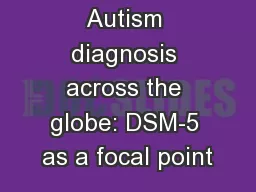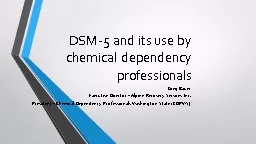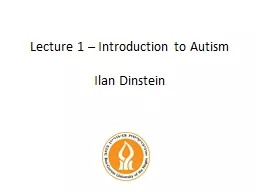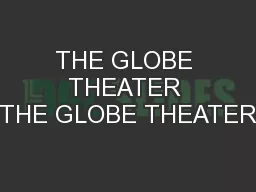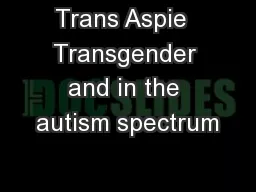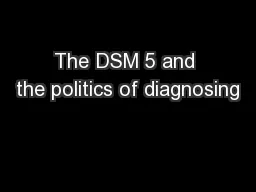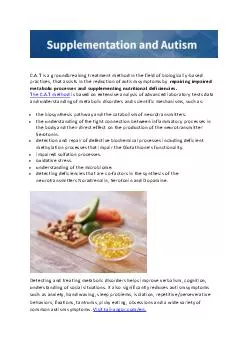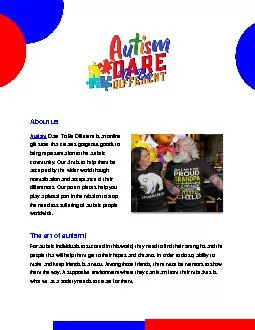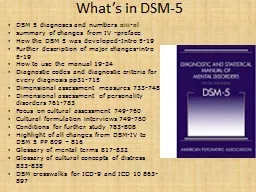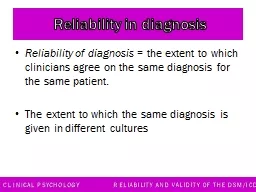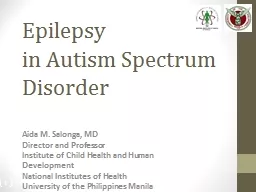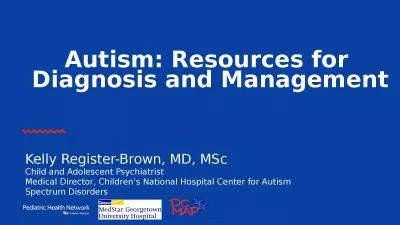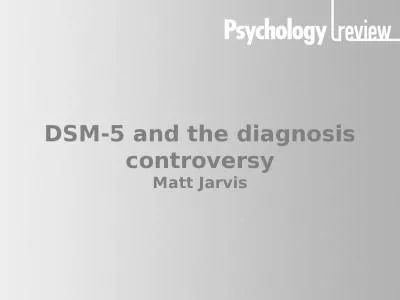PPT-Autism diagnosis across the globe: DSM-5 as a focal point
Author : tatiana-dople | Published Date : 2017-10-23
1 Steven Kapp Overview Background of autism and DSM The context Critiques of DSM5 The players DSM5 Workgroup and ASAN Impact 2 World autism awareness for what 3
Presentation Embed Code
Download Presentation
Download Presentation The PPT/PDF document "Autism diagnosis across the globe: DSM-5..." is the property of its rightful owner. Permission is granted to download and print the materials on this website for personal, non-commercial use only, and to display it on your personal computer provided you do not modify the materials and that you retain all copyright notices contained in the materials. By downloading content from our website, you accept the terms of this agreement.
Autism diagnosis across the globe: DSM-5 as a focal point: Transcript
Download Rules Of Document
"Autism diagnosis across the globe: DSM-5 as a focal point"The content belongs to its owner. You may download and print it for personal use, without modification, and keep all copyright notices. By downloading, you agree to these terms.
Related Documents

